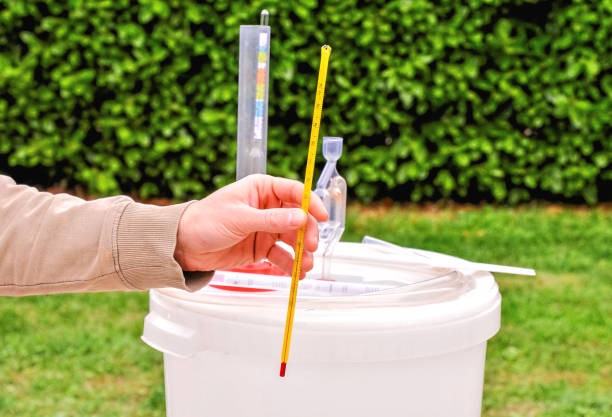In the world of waste management, choosing the right skip bin can often feel like navigating a maze without a map. Whether you’re embarking on a home renovation project, clearing out your garage, or managing construction debris, the importance of selecting the perfect skip bin cannot be overstated. It’s not just about disposing of waste; it’s about doing so efficiently, cost-effectively, and responsibly. This comprehensive guide aims to illuminate the path to finding your ideal skip bin, ensuring you skip the guesswork and make an informed decision.
Understanding Skip Bin Sizes and Their Uses
Skip bins are available in a range of sizes to cater to different types of projects, each size measured in cubic meters (m³). For small tasks like a minor home cleanup or a DIY project, a 2 to 3 m³ bin, equivalent to 2-3 trailer loads, is sufficient. Medium projects, such as significant home renovations or office clear-outs, would benefit from a 4 to 6 m³ skip, holding around 4-6 trailer loads of waste. And for those tackling large-scale construction or extensive garden remodels, opting for a 10 to 12 m³ bin, accommodating 10-12 trailer loads, is advisable. Selecting the right size is pivotal; too small, and you may end up requiring an additional bin, while too large could mean paying for unused space. Accurately gauging your project’s scale and the waste it will generate is crucial in avoiding these pitfalls.
Assess Your Waste Type and Volume
Before locking in your skip bin choice, critically evaluate what and how much waste you’ll produce. Different materials require specific bins—lighter waste like household items or yard debris generally fits in standard bins, while denser materials such as concrete or soil might necessitate a heavy-duty option. To estimate the volume, if feasible, gather your waste together and measure it, providing a clearer idea of the required bin size. Another method is comparing your waste pile to familiar objects or spaces, such as equating 1 cubic meter to the load capacity of a standard pickup truck bed. This step not only streamlines the selection process but also helps in avoiding the inconvenience of choosing a bin that’s too small or excessively large for your needs.
Consider the Location and Accessibility of Your Skip Bin
Choosing an appropriate spot for your skip bin involves more than just finding open space on your property. You must ensure the area allows for easy delivery and pick-up, factoring in overhead obstacles Find the perfect skip bin size for your project electrical wires that could complicate placement. For properties lacking sufficient space, you may consider placing the bin on a public road or sidewalk, which typically requires obtaining a permit from your municipality. This additional step might affect both your project timeline and budget. Moreover, think about whether the chosen location is accessible for a large delivery vehicle. Navigating these logistical aspects in advance can prevent unforeseen complications, facilitating a smoother project flow.
Budget Considerations for Your Skip Bin Hire
Cost plays a crucial role in the skip bin selection process. Prices can fluctuate significantly based on the bin’s size, the type of waste it will contain, and the rental period’s length. It’s wise to gather quotes from several companies to ensure you’re getting a fair deal. However, the cheapest option may not always be the best choice. Evaluate the provider’s reliability, the comprehensiveness of their service, and any hidden charges, such as fees for obtaining a permit to place the bin on public property. Keep in mind, opting for a smaller bin to reduce expenses might backfire if you end up needing a second one due to underestimating your waste volume. Striking the right balance between affordability and practicality is key to managing your project’s budget effectively.
Making the Final Decision: Skip Bin Size for Your Project
With all considerations in mind—waste volume and type, bin placement logistics, and budget constraints—it’s time to decide on the skip bin size that best fits your project’s needs. If uncertainty lingers, reaching out to skip bin rental companies for advice can be incredibly helpful. They can offer insights based on vast experience with similar projects. When consulting these services, be as specific as possible about your project details, from the expected waste materials to potential space limitations. This allows them to provide recommendations tailored to your unique situation. Engaging with them also offers a glimpse into their level of customer support, an important factor for a hassle-free rental experience. This step, while it may seem minor, is pivotal in ensuring your project proceeds smoothly without any unforeseen waste management issues.
Conclusion
Navigating the selection of the right skip bin for your project can be streamlined with the right approach. By analyzing the scale and nature of your waste, pondering the best placement for the bin, and balancing your budget, you can pinpoint the optimal choice for waste management. It’s advisable to lean towards a slightly larger size if you’re unsure, as this can prevent the inconvenience and additional cost of needing a second bin. Don’t hesitate to consult with skip bin rental experts, who can offer tailored advice and ensure you’re equipped with the most suitable option for your specific needs. This strategy ensures you manage your project’s waste efficiently, keeping your focus on the task at hand rather than on waste management hurdles. With these insights, finding the right skip bin becomes a clear and manageable task, setting the stage for a successful and organized project.

